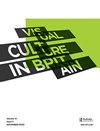‘Queer British Art, 1861–1967’ at Tate Britain, London, 5 April–1 October, 2017
Q2 Arts and Humanities
引用次数: 0
Abstract
Moving through the recent ‘Queer British Art, 1861–1967’ exhibition held at Tate Britain, these reviewers were inspired by how far we, as a queer community, have come and yet at the same time were struck by how far we have yet to go in providing space for our art and artists within institutions and in garnering greater visibility within the larger public. First and foremost, the inherent bravery on the part of the curator, Clare Barlow, and all those who assisted her in tackling such a topic, even in 2017, needs to be highlighted and acknowledged. The exhibition, certainly long overdue, is a strong reminder of the constant need for such innovative programming, that the struggle for true equality is far from over and that institutions must continue to foster genuine inclusivity and diversity without falling prey to fashionable trends. Throughout the exhibition, also apparent were the difficulties and struggles that Barlow and her staff surely would have endured in the organizing of the exhibition. A confidential, reliable source informed us that Barlow met with resistance in her negotiations with conservative institutions and private collectors who were reluctant to lend their art for fear of too-close an association with the governing theme. For these two reviewers, we found ourselves caught in a double bind. On the one hand, as queers we want to applaud Barlow – and by extension Tate Britain – for her endeavour; however, as queer scholars, we also need to be aware and critical of the absences, gaps and omissions in the exhibition. ‘Queer British Art, 1861–1967’ was divided into eight thematically and loosely chronologically determined rooms. Room 1, ‘Coded Desires’, privileged a discussion of androgyny and effeminacy, exemplified by the works of Simeon Solomon and Frederic Leighton, as a way of decoding the sensual, ambiguous and alternative forms of masculinity in the nineteenth century. Works in this room were sumptuous and called out to be touched, whether Evelyn de Morgan’s Aurora Triumphans or Leighton’s celebrated Sluggard. This tactile aspect of the works must not be underestimated, in our age of presentism and Instagram mania, especially in the manner they evoked desire and the sensual. As a means of situating the underlying themes, the inclusion of contemporary art reviews proved useful such as, for example, one critic who noted that in Leighton’s Daedalus and Icarus, the former appeared more like ‘a maiden rather than a youth’ (The Times 1869). Moving from eroticism and sensuality to a concern for ‘Public Indecency’, Room 2 offered a glimpse into the world of scandal at the end of the nineteenth and the beginning of the twentieth century. Here, iconic queer authors such as Oscar Wilde and Radclyffe Hall2017年4月5日至10月1日,伦敦泰特英国美术馆,“Queer British Art,1861–1967”
通过最近在泰特英国美术馆举办的“英国酷儿艺术,1861-1967”展览,这些评论家受到了我们作为一个酷儿群体所取得的成就的启发,但同时也被我们在为我们的艺术和艺术家提供机构空间以及在更大的公众中获得更大的知名度方面还有很长的路要走而震惊。首先,策展人克莱尔·巴洛(Clare Barlow)与生俱来的勇气,以及所有帮助她处理这一话题的人,即使是在2017年,都需要得到强调和认可。这场姗姗来迟的展览强烈提醒我们,对这种创新项目的持续需求,争取真正平等的斗争远未结束,各机构必须继续促进真正的包容性和多样性,而不是成为时尚潮流的牺牲品。在整个展览中,巴洛和她的工作人员在组织展览时肯定会遇到的困难和斗争也很明显。一位机密可靠的消息来源告诉我们,巴洛在与保守机构和私人收藏家的谈判中遇到了阻力,他们不愿出借自己的艺术品,因为担心与主流主题联系过于紧密。对于这两位评论者,我们发现自己陷入了两难境地。一方面,作为同性恋者,我们想为巴洛——以及泰特美术馆——的努力鼓掌;然而,作为酷儿学者,我们也需要意识到和批判展览中的缺位、空白和遗漏。“酷儿英国艺术,1861-1967”分为八个展厅,按主题和时间顺序大致确定。1号展厅,“编码的欲望”,特别讨论了雌雄同体和女性化,以西蒙·所罗门和弗雷德里克·莱顿的作品为例,作为一种解读十九世纪男性气质的感性、模糊和另类形式的方式。这个房间里的作品非常丰富,值得一看,无论是伊夫林·德·摩根的《极光凯旋》还是莱顿著名的《懒汉》。在我们这个现代主义和Instagram狂热的时代,尤其是在它们唤起欲望和感官的方式上,这些作品的触觉方面不容低估。作为一种定位潜在主题的手段,当代艺术评论被证明是有用的,例如,一位评论家指出,在莱顿的代达罗斯和伊卡洛斯中,前者看起来更像是“一个少女而不是一个年轻人”(《泰晤士报》1869)。从色情和性感到对“公共猥亵”的关注,2号房间让我们得以一窥19世纪末和20世纪初的丑闻世界。这里有著名的酷儿作家,比如奥斯卡·王尔德和拉德克利夫·霍尔
本文章由计算机程序翻译,如有差异,请以英文原文为准。
求助全文
约1分钟内获得全文
求助全文
来源期刊

Visual Culture in Britain
Arts and Humanities-Visual Arts and Performing Arts
CiteScore
0.60
自引率
0.00%
发文量
1
 求助内容:
求助内容: 应助结果提醒方式:
应助结果提醒方式:


